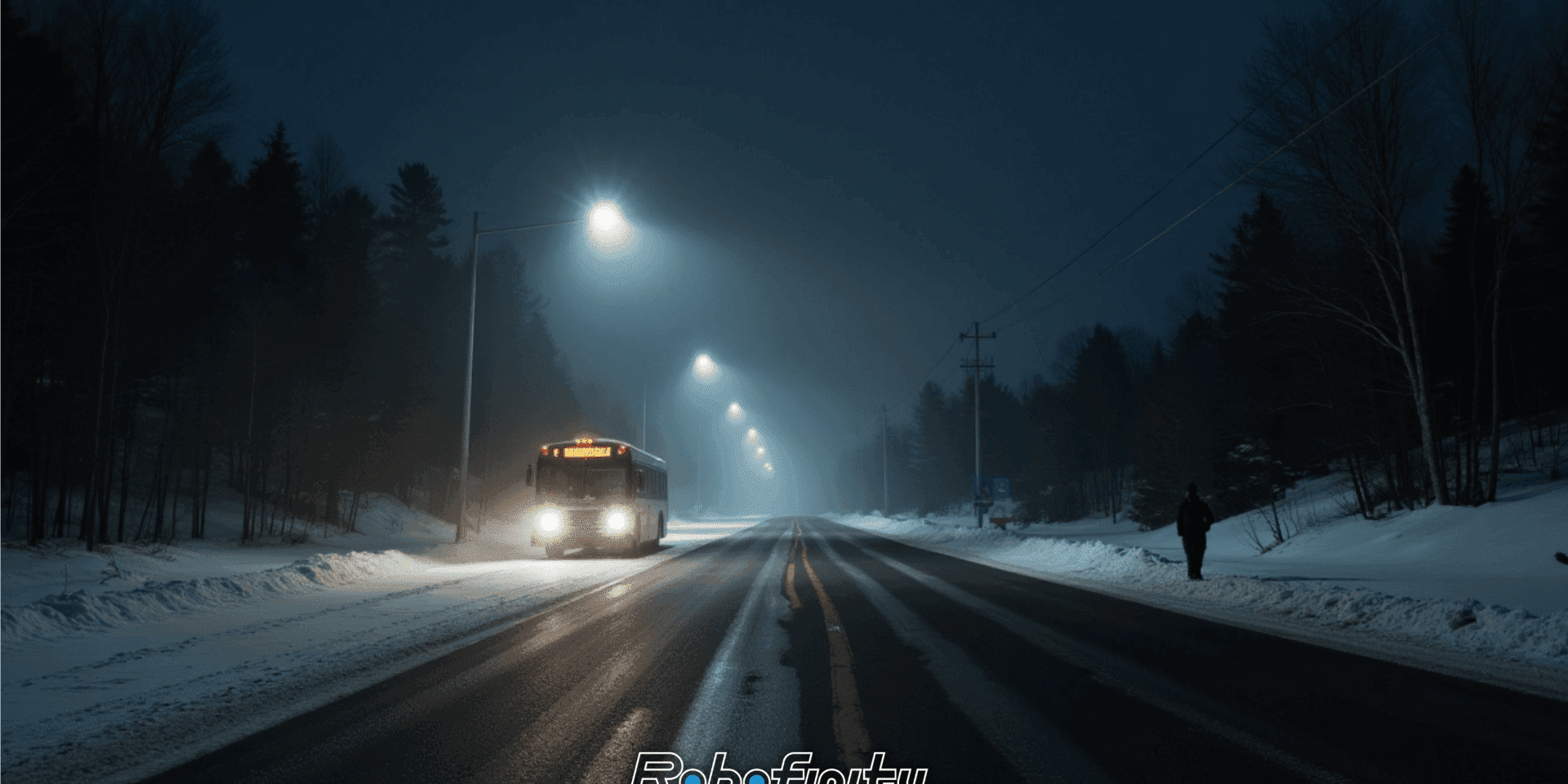It was just after 8 PM in early October near Wawa, Ontario.
A municipal night bus was making its final run along a rural route connecting remote neighborhoods to the town center. The sun had set hours ago. A light snow was falling, and fog was rolling in from the lake.
The driver didn’t see the woman until she stepped forward.
“She was walking on the shoulder, wearing a dark coat,” says a transit supervisor. “No reflective gear. No sidewalk. By the time she came into headlight range, we had less than two seconds to react.”
The driver braked hard. The bus stopped just short.
“She said she was on her way to catch the next morning’s shift at the hospital,” the supervisor recalls. “If we’d been going 10 km/h faster… I don’t want to think about it.”
But what shook the team wasn’t just the close call — it was the realization:
If she hadn’t moved, we might never have seen her at all.
❄️ The Hidden Dangers of Northern Ontario Transit
Northern Ontario is vast, remote, and unforgiving — especially after dark.
For public transit operators, the challenges are real:
- No streetlights on rural and semi-rural routes
- Early snow and black ice forming by mid-October
- Fog from lakes and rivers reducing visibility to meters
- Pedestrians in dark clothing blending into the night
And with long winter nights — up to 16 hours of darkness — the risk window is wide.
“Down south, people walk to stops under streetlights,” says a fleet operations lead. “Up here, they’re walking in total darkness, on gravel shoulders, in snow. And our buses are big, heavy, and need time to stop.”
At 60 km/h, a transit bus covers 16.7 meters per second.
With a 3-second stopping distance (including reaction time), that’s over 50 meters to come to a full stop.
In fog or snow, visibility can drop below that — meaning no time to react at all.
The Turning Point: A Shift to Proactive Safety
After the incident, the transit authority launched a safety review.
“We’ve added signage, improved lighting at stops, and increased driver training,” says a safety coordinator. “But none of it helps if the person isn’t visible until it’s too late.”
Then they tested Robofinity InsightDrive™.
“We were skeptical,” admits a driver. “But during a night trial, it spotted a volunteer walking 180 meters ahead — in snow, in fog, in a black jacket. We didn’t see them until 50 meters out. InsightDrive™ saw them at 200.”
That changed everything.
Business Impact: Safer Routes, Fewer Risks
The transit agency piloted InsightDrive™ on three night-route buses. Within two months:
- Near-miss reports dropped by 70%
- Driver confidence increased significantly
- No pedestrian incidents reported
“It’s not just about liability,” says a municipal planner. “It’s about community trust. When people know the bus can see them — even in the dark — they feel safer using it.”
Now, the agency is evaluating a full fleet rollout.
Why Northern Transit Needs Smarter Vision
Northern Ontario’s environment demands more than reflective vests and better headlights:
- Long winter nights mean limited visibility for most of the day
- Sudden weather changes catch drivers off guard
- Remote stops lack lighting and infrastructure
- Wildlife crossings add another layer of risk
InsightDrive™ doesn’t rely on visible light — it detects heat signatures, allowing it to identify people, animals, and vehicles up to 656 feet (200 meters) ahead, even in total darkness, snow, or fog.
The Bottom Line: Safety Shouldn’t Depend on the Weather
For Northern Ontario communities — from Thunder Bay to Timmins, Sudbury to Kapuskasing — public transit is a lifeline.
But it shouldn’t come with a hidden risk.
As one driver put it:
“We don’t just drive a route. We carry people home. And now, we can actually see them coming.”
Learn more about how InsightDrive™ supports public transportation
Request a business consultation for transit fleets








